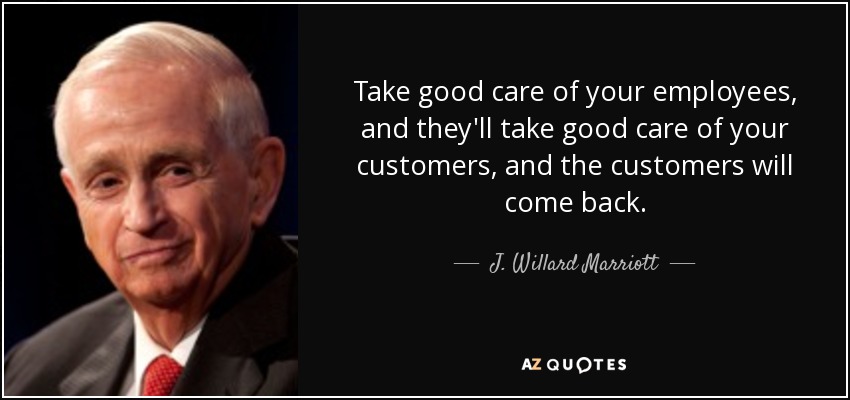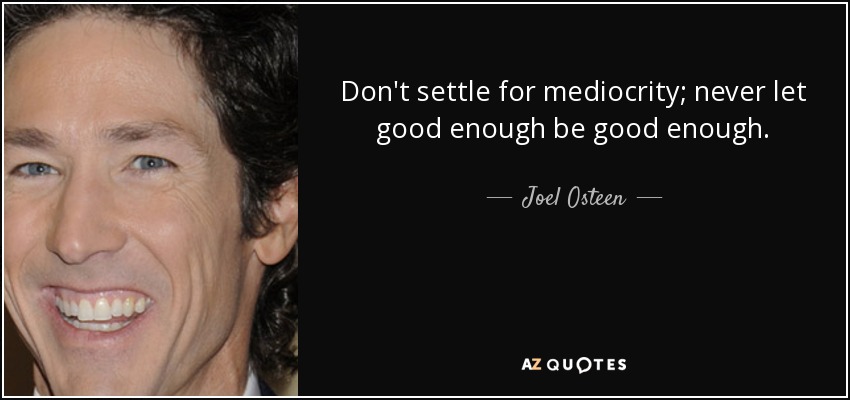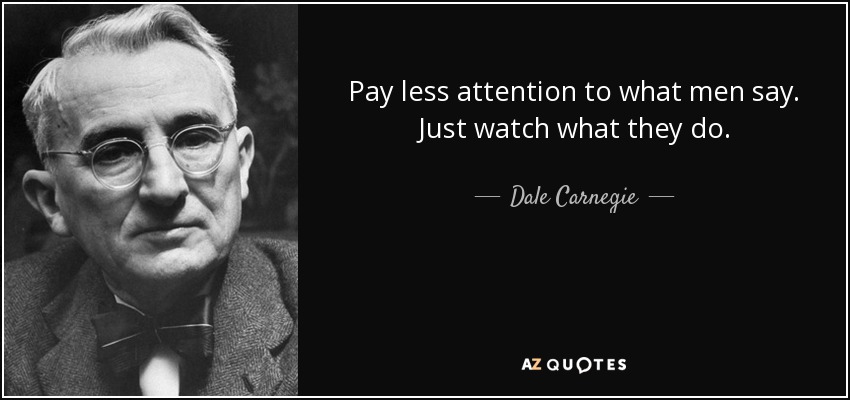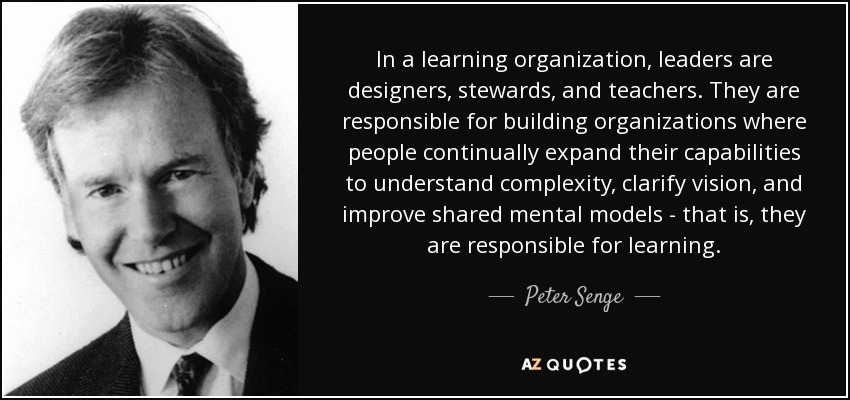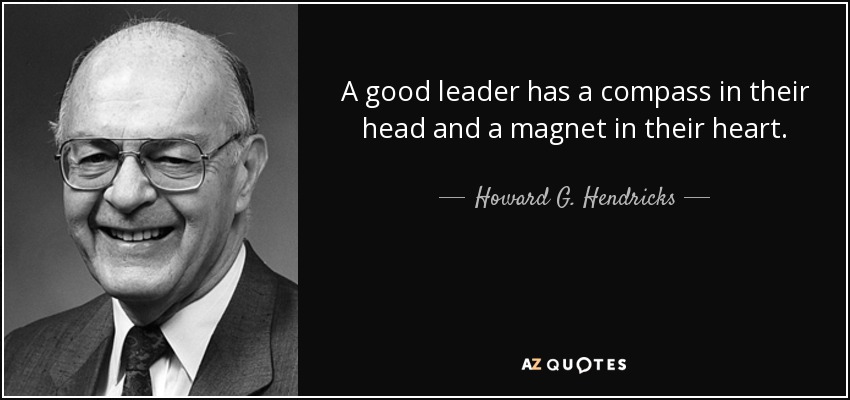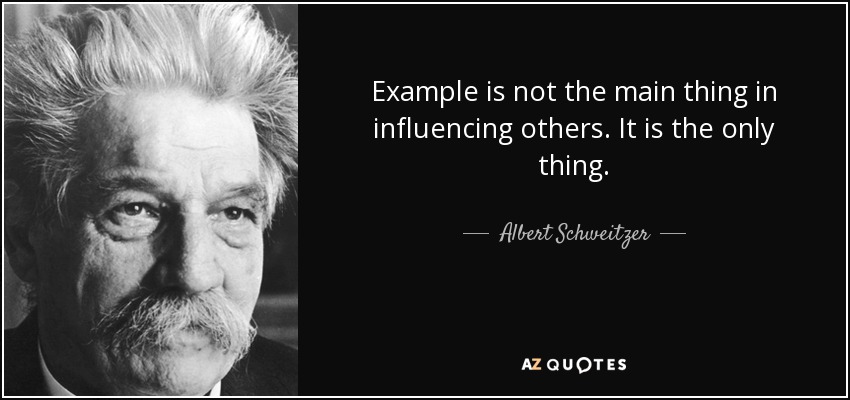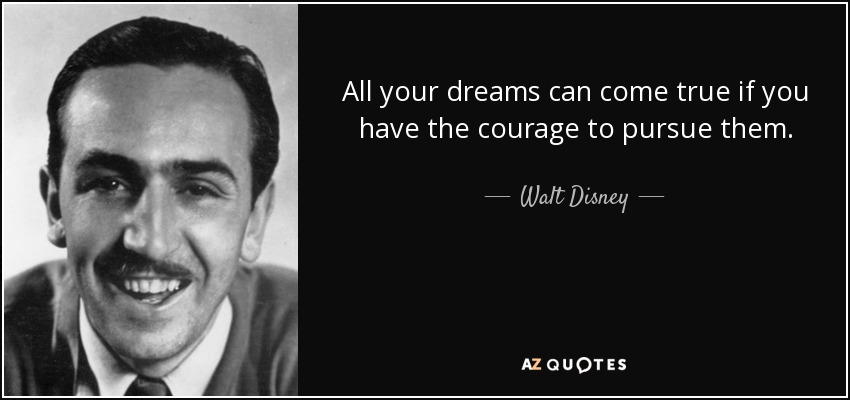Click here to return to Blog Post Intro
Frances Hesselbein, Chairman & Founding President, Leader to Leader Institute
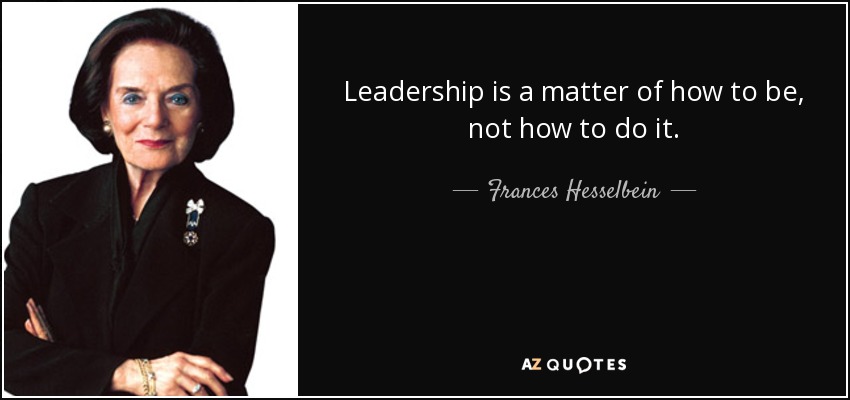
Hesselbein penned the foreward to Cockerell’s book Creating Magic, and notes that he does just that! As the Executive Vice President of Operations for the Walt Disney World® Resort, for ten years Lee led a team of 40,000 cast members whose daily challenge was to create magic for the millions of people who visited the parks and resorts.
Cockerell’s remarkable story of a leadership journey is filled with common sense lessons about making magic that we can translate into our own careers, business cultures, or visions of the desired future.
Lee’s approach helps us remember Peter Drucker and his philosophy: “They are not your employees, they are your people.”
He learned the power of inclusion that later became “RAVE”:
- Respect
- Appreciate
- Value Everyone.
Lee’s leadership is never about him, but always about the people.
Making Magic
Cockerell point out, “It’s not the magic that makes it work; it’s the way we work that makes it magic.”
For example, when Hurricane Charley finally subsided from hammering the Florida coast, around midnight, exhausted Cast Members worked through the night, clearing debris, getting supplies to where they were needed, and hauling away thousands of damaged trees. It was a monumental effort.
While many other attractions and businesses in central Florida remained closed and local municipalities were struggling to restore power and clear the roads, Disney was making magic.
It’s easy to think you’re doing well when times are good. The real test comes when a crisis hits, and Disney’s response validated everything Cockerell had learned and tried diligently to teach others. Each Cast Member was prepared, mentally and emotionally, to let the vision of Disney World govern everything he or she did:
- Treat the Guests as cherished friends;
- Exceed their expectations; and
- Give them the best vacation experience of their lives.
Everyone from top executives to rookies pursued this vision with remarkable dedication.
Each of the fifty-nine thousand Cast Members is trained to treat each and every Guest with the utmost care and respect. And they do this consistently because they are treated exactly the same way by the Disney leadership: with the utmost care and respect.
The formula is simple: Committed, responsible, inspiring leaders create a culture of care, which leads to quality service, which leads to Guest satisfaction, which leads to measurable business results and a strong competitive advantage.
In short, great leadership leads to employee excellence, which leads to customer satisfaction and strong business results. In other words, the customer doesn’t come first; leadership comes first.
Good leaders are humble enough to admit what they don’t know, and great leaders are constantly looking for new information.
Leaders have to set the proper tone by staying cool, calm, and collected under pressure. No matter what’s going on, they have to focus single-mindedly on doing the best they can with what they have instead of blaming, whining, or wishing that things would change.
Now, here are Cockerell’s 10 Common Sense Leadership Strategies:
STRATEGY #1: REMEMBER, EVERYONE IS IMPORTANT (TRUE INCLUSION)
“Inclusion” is a major buzzword in business today. It’s usually thought of in terms of ethnic, racial, religious, and gender diversity and filling the workplace with representatives of every demographic category. This is an important and worthy endeavor, and Cockerell is proud that Walt Disney World created an environment that welcomed Cast Members of every culture, religion, gender, race, ethnicity, physical condition, and sexual orientation. But inclusion is not just a matter of hiring policy or of respecting the differences among people from diverse cultures and backgrounds. It’s about engaging and involving your employees and showing them that each one of them is important.
When everyone matters and everyone knows he or she matters, employees are happy to come to work, and they’re eager to give you their energy, creativity, and loyalty. The result is predictable: more productivity and satisfaction; less absenteeism and turnover. On the other hand, when people don’t feel included, they become apathetic and perform at less than their full capacity. To put it simply, all people want exactly what you want. You want to be included, listened to, respected, and involved, don’t you? You want to be asked your opinion and have it taken seriously. You want to feel valued.
Disney defined inclusion with the acronym RAVE: respect, appreciate, and value everyone and developed 13 strategies to build a culture of inclusion across the team.
1. Make sure everyone matters . . . and that everyone knows it.
Your job is not just to make your employees happy but to create an environment that enables them to excel at what they do.
Common sense? Yes. Common practice? No.
The people who clean the bathrooms, sweep the floors, and empty the garbage are just as important as the executives, managers, directors, and supervisors. Maybe even more important. Ditto the ticket takers, the parking lot attendants, and the people who answer the phones.
Everyone is important. And this is not just true of theme parks and resorts; it is true of every organization everywhere, including yours.
2. Know your team.
Every worker has different motivations, priorities, preferences, and dreams. To make them feel special, you have to get to know every person. How do you do that? Learn about your employees’ past work experiences, their aspirations, their skills and talents, their short- and long-term goals.
3. Let your team get to know you.
Too many leaders keep their distance from employees, both physically and emotionally. You’ll get a lot more respect if you let people know who you really are. This holds especially for owning up to your mistakes and admitting what you don’t know. The more authentic you are, the more your employees and peers will respect you and the more they will trust your judgment.
4. Greet people sincerely.
5. Reach out to everyone on your team.
Everyone wants to be heard and respected. It’s one of our most basic human needs.
6. Make yourself available.
Do everything in your power to be there for people when they need you. Like good parents, great leaders are always available.
If you take care of all the little issues, big problems are less likely to occur. Being available enables you to resolve delicate issues quickly, before they escalate, and the company will be spared protracted grievances and legal entanglements. When you work hard at being available, other leaders will follow your example, and the practice will become commonplace at every level of the organization.
Always leave blank spaces in your calendar to accommodate the unexpected, because the unexpected is often more important than the expected.
7. Listen to understand.
As Stephen Covey puts it in The 7 Habits of Highly Effective People, “Seek first to understand, then be understood.”
8. Communicate clearly, directly, and honestly.
If you communicate clearly, directly, and honestly all the time, people will understand what you want them to know and what you want them to do. And you will earn a reputation as a trustworthy individual.
Make an effort to communicate one-on-one in person whenever you can. Second best is a one-on-one phone conversation. If you must resort to e-mail or written notes, find a way to personalize those messages, and try to make them enjoyable and interesting.
9. Stand up for the excluded.
There are a million reasons a person can feel excluded in the workplace, but whatever the underlying cause may be, the instant it comes to your attention, take steps to rectify the situation. Make no mistake, anyone who feels left out is left out.
10. Forget about the chain of command.
Leaders who continue to manage using a chain of command are doomed to failure, because a rigid top-down command structure can slow communication significantly and deliver less than reliable information. This doesn’t mean that people should not talk first to their immediate supervisors when problems arise; it means that good leaders are willing to listen to anyone in their organizations, whether or not that person reports to them directly.
11. Don’t micromanage.
If you want to lose great people quickly, look over their shoulders all the time and make all their decisions for them. On the other hand, if you want to be a great leader, learn to let go. Hire great people, be perfectly clear about their responsibility, authority, and accountability, and let them do their thing.
12. Design your culture.
The Disney Institute defines a corporate culture as “the system of values and beliefs an organization holds that drives actions and behaviors and influences relationships.”
Kevin Meeks, the network and business development director at Volvo’s British operation (Volvo Car UK Limited), says that “one of the most important learnings from our time with Disney was a deeper appreciation of the role that every individual in the company plays in delivering an outstanding service to our customers.”
The result is what it calls Volvo PRIDE, an acronym for passion, respect, integrity, drive, and energy. Highlighting Volvo’s culture, heritage, and reputation for safety, quality, and environmental care, the program is rated as “very good” or “outstanding” by 95 percent of its attendees.
13. Treat your people as you would want your customers to be treated.
There is a direct correlation between how you treat your employees and how those employees treat your customers. Cast Members at Walt Disney World are trained to deliver on these Four Guest Expectations:
- Make me feel special.
- Treat me as an individual.
- Respect me and my children.
- Be knowledgeable.
Here’s Disney’s version of the Golden Rule, “Leaders do unto Cast Members the way they want Cast Members to do unto Guests.” It works because the Four Cast Expectations are essentially the same.
STRATEGY #2: BREAK THE MOLD
The organization structure is a crucial component of leadership. You might hire the best possible people, inspire them, and pay them every cent they’re worth, but if you don’t give them the right framework in which to operate, they can’t perform at their best.
Good organizational architecture not only keeps costs in line and maximizes efficiency but also streamlines the decision-making process, enhances employee satisfaction, and facilitates creativity and innovation at all levels.
Remember, a great leader never settles for good enough. Here are some practical strategies to guide your way.
1. Be clear about who’s responsible for what.
When the lines of authority were unclear at Disney, inconsistent decisions were constantly being made. Clear communication is one of a leader’s principal tasks, especially when it comes to responsibility and authority.
2. Remember that responsibility and authority go hand in hand.
The key point: As a leader you are always responsible for the outcome. The fact is, if things go wrong, it’s the leader’s responsibility. So make sure everyone knows exactly what outcomes you expect and exactly what authority he or she has and doesn’t have, and install rigorous procedures for keeping informed.
3. Make every position count.
4. Get as flat as you can.
It is almost always a good idea to minimize the number of layers in your organization, so you can deal directly with as many people as possible. Overall, a flat structure enhances productivity by streamlining the decision-making process, speeding up follow-through, and optimizing communication. Fewer layers mean fewer mistakes, misunderstandings, mistranslations, and other misses.
5. Eliminate overwork.
Walt Disney World pushed managers to be personally involved with the leadership development of their direct reports while spending up to 80 percent of their day on the front lines with Guests and Cast Members. Over time, they learned there simply weren’t enough hours in the day for them to do it all. Disney responded by cutting other expenses and using the savings to create new administrative positions called coordinators. The coordinators took over some of the managers’ routine responsibilities so they had time to train and develop their teams and deal directly with Guests.
Consider giving more authority to trusted frontline managers. It can free them to make decisions quickly without the endless reports and meetings needed to get approval from those higher up in the organization.
6. Rethink the meeting structure.
One typical symptom of a flawed organizational design is too much time spent in meetings. Disney’s weekly meetings were wasteful because they spent too much time discussing things of low importance just to fill up the time allotted. Participants suggested moving to monthly meetings instead.
The new monthly gatherings were jam-packed with important, productive work, without a minute wasted. The agendas were limited to important items, and lesser issues were easily handled by e-mail, telephone, and impromptu one-on-one conversations. If an important matter came up unexpectedly, they simply called a special meeting to deal with it.
The best way to evaluate the effectiveness of meetings is to get honest feedback from the people who attend them. Great leaders keep in constant touch with employees, but they gather them together only when it’s truly necessary.
7. Anyone can take responsibility for change.
If you have ideas for doing things better, write them up and present them to the person you report to. But don’t come across as a complainer. Deliver your proposal in a professional manner.
Remember, people on the front lines see things you don’t, like who doesn’t have enough responsibility and who is being stretched too thin and where communication is breaking down because of structural flaws.
8. Be prepared to take risks.
It has been said that two attitudes toward change can sabotage success. One is: “But this is the way we’ve always done it.” The other is: “But we’ve never done it that way before.” Don’t fall prey to either of these.
9. Expect resistance.
People don’t always recognize the merits of change right off the bat. But if you persist, they’ll soon come to see why breaking the mold is not only in the best interest of the company but in their best interest as well, and they may even follow your example by initiating changes themselves.
10. Don’t try to win every battle.
While leaders need to be persistent and determined in the face of resistance, they also have to be flexible enough to fine-tune their vision at every step.
11. You’re never really done. Once you have a great structure in place, don’t rest on your laurels.
Remember, the changes you initiate might seem forward-leaning today, but they will be tradition tomorrow.
If you don’t continuously re-evaluate your structure, you run the risk of becoming the old-timer who resists change. And the moment you do, someone with a fresh perspective will be ready to replace you!
STRATEGY #3: MAKE YOUR PEOPLE YOUR BRAND
Many people think of a brand in terms of a product or a logo, but Cockerell soon discovered that people were Disney’s brand. No matter how good your products and services are, you can’t achieve true excellence unless you attract great people, develop great people, and keep great people.
1. Define the perfect candidate.
When you recruit or hire someone, it’s vital to be totally clear on what you’re looking for. Evaluate candidates according to the following four areas of competency:
- Technical competence. This simply means having the requisite knowledge and skills to do the job.
- Management competence. Every employee should be disciplined, self-controlled, and organized.
- Technological competence. Everyone needs to understand and utilize available technologies relevant to his or her position.
- Leadership competence. The ability to lead is something to look for in everyone you consider hiring, no matter what the position is.
2. Don’t settle for a clone.
When filling a position, don’t look for a replica of the person who’s leaving; different times often call for different skills and experience, even if the job title remains the same.
3. Look for good people in unlikely places.
4. Involve the team in the selection process.
Great leaders go beyond human resources and search firms; they give selected team members the chance to evaluate or interview the candidates.
5. Select by talent, not by résumé.
An estimated 40 percent of résumés are said to contain exaggerations in such areas as educational background and previous job titles, responsibilities, and accomplishments. Think of them as advertisements, not objective reports.
6. Find a good fit.
Consider “team chemistry” in every hiring decision. Match the candidate’s personality with the organizational culture, which may require you to turn away many qualified people because they do not have the relationship skills or political sensitivity for a particular environment.
Bottom line: Your organization’s culture is the product of the people in it, and every addition and subtraction will alter the chemistry. Do everything you can to keep it harmonious.
7. Hire people who are smarter and more talented than you.
Great leaders don’t let personal insecurities get in the way of success. Hire the absolute best. Their brilliance will not diminish your reputation; it will make you shine even brighter.
8. Describe the job completely.
Candidates should know exactly what they’ll be signing up for if they join your organization.
At the Disney hiring center, which is called Casting, a video is shown to all potential hires before they are interviewed. The movie highlights the Disney heritage and traditions; provides an overview of the compensation plan, benefit package, and perks; and describes the policy on scheduling and other practical issues. It also outlines what the company expects by way of professionalism, right down to the strict grooming standards that Cast Members are held to. Some applicants get up and leave without bothering with the interview.
9. Check out candidates personally.
Anyone can look great on paper and have references that sing his or her praises to the sky, but people are only as good as the results they achieve, so you owe yourself and your company a good close look. If possible, visit his or her current place of business and observe the operations carefully.
10. Ask revealing questions.
Some of Cockerell’s favorite questions were the following:
- How do you stay on top of the labor costs in your organization?
- What’s the best idea you ever came up with to improve your business?
- How do you plan your day?
- What would you do if you found out your boss was doing something illegal or unethical?
11. Use structured interviews when possible.
12. Find out what really matters to your applicants.
Disney needed to know if potential Cast Members could work on weekends or holidays—their busiest times. But Cockerell noted that he was suspicious of candidates who were too willing to sacrifice their families and private lives for the sake of the company. He found that in the long run, balanced people with lives outside work were usually the best employees.
13. If possible, have candidates demonstrate their expertise.
14. Select the best candidate, not the best one available.
Experts have said that American companies are too quick to hire and too slow to fire. Remember, in the long run it’s better to put in the extra work than to fill slots with the wrong people.
15. Look for people to nurture and promote.
Great leaders always have their antennae out for people to elevate to leadership positions, and they use every tool available to guide their selections. Cockerell recalls that many Disney Cast Members didn’t even know their own potentials until a manager or executive spotted them.
16. Constantly evaluate performance.
17. Recognize when the job doesn’t fit the talent.
Figuring out what to do with employees who don’t fit is one of the hardest things for leaders
18. Terminate quickly and kindly.
A leader’s job is to do what has to be done, when it has to be done, in the way it should be done, whether you like it or not and whether they like it or not.
Cockerell learned from early mistakes that once a decision is made to terminate someone, a strong leader acts quickly. Needless delays do not spare the person an ounce of pain, and they certainly don’t do your stress level any good. In fact, it makes for a toxic workplace.
It is essential that leaders manage termination with kindness and compassion.
Remember, decent people are owed a decent explanation and, if possible, a good lesson to take away from the bitter experience.
19. Don’t lose touch with those you lose.
Do everything possible to reconfigure the organization’s structure to suit its talent.
STRATEGY #4: CREATE MAGIC THROUGH TRAINING
Cockerell tells a story of his son, Daniel, once telling him, “Dad, you can’t fire your children; you have to develop them.”
Cockerell recognized that if leaders applied that same wisdom to their employees, they’d find that a lot fewer of them quit or get fired. Like good parents, good leaders prepare their people to take on future responsibilities by providing appropriate educational opportunities and exposing them to important developmental experiences.
Neither your personal success nor your paycheck will give you the same satisfaction as seeing the people you lead achieve their goals and aspirations.
In addition to formal training, informal learning is emphasized every minute of every day. Disney leaders are given extensive resources to help Cast Members learn and grow continuously.
1. Give people a purpose, not just jobs.
Back when Orlando was still a sleepy town, Walt Disney wrote the following to the leadership of his young theme park in Anaheim, California: “Here at Disneyland we meet our world public on a person-to-person basis for the first time. Your every action (and mine as well) is a direct reflection of our entire organization.” That spirit of purpose has been instilled ever since in each individual who works at what became the biggest resort business in the world.
To inspire his staff to reach for a higher level of service, Cockerell created a purpose statement that was so simple no one would ever forget it: “Be so nice to our guests that they won’t believe it.”
Others put it this way, “Make sure that every Guest has the most fabulous time of his or her life.” That sentence tells Cast Members exactly what the ultimate outcome of their work must be.
Disney’s Vision Statement: Walt Disney World will always be dedicated to making dreams come true.
Disney’s Essence Statement: Walt Disney World is a magical passage into a world of fantasy and adventure.
Disney’s Mission Statement: Our mission is to honor our heritage and continually reinvent Walt Disney World . . .
- By making dreams come true, creating magical memories and developing lifetime friendships with each Guest.
- By valuing, respecting and trusting each other as dream makers and honoring our individuality, ability and contributions as Cast Members.
- By fostering a fun and enriching environment in which creativity, teamwork, openness, diversity, courage, balance and accountability are celebrated.
- By being innovative and embracing new ideas.
- By eliminating bureaucracy and all the barriers that get in the way of operating simply, quickly and efficiently.
- By achieving the financial successes that will enable us to grow and fulfill our Vision.
2. Take your role as a teacher seriously.
Remember, who does the teaching is just as important as what is being taught. For instance, lots of people can teach a seminar out of a manual, but people with expertise and experience in the topic bring something extra.
3. Become a COACH.
Cockerell uses the acronym COACH—care, observe, act, communicate, help—to be a great guide for training and developing employees:
- Show your team members you care by focusing on everyone’s individual development.
- Close observation of the workplace will tell you what needs to be improved.
- Timing is vital when you need to improve performance or behavior, and the best time is now.
- The best teachers are great communicators who find just the right way to get the attention of others.
- Use your leadership position to help others become better.
4. Teach by example.
Leaders who demand excellence need to model excellence. Your people will learn more from observing you than from what you tell them, so always lead by example. I read two quotes about parenting recently that also apply to business leaders: “You should not worry that your children are not listening to you. You should worry that they are always watching you” and “What you teach your children you teach their children.”
5. Teach the principles of great service.
6. Train people for Magical Moments and Take 5s.
At Walt Disney World, Magical Moments are planned events designed to engage the Guests and enhance their experience.
Take 5s are more spontaneous. The Cast has been trained to seize opportunities to do something special for Guests: replace a spilled ice cream for free; walk an older person to the restroom; ask a little girl dressed like Cinderella for her autograph; tell a family something interesting about the park, like why there are special window displays on Main Street.
Why are these individualized interactions called Take 5s? Because they blow the Guests’ minds in less than five minutes. Think of them as real-life versions of those random acts of kindness you read about on bumper stickers.
7. Teach them how and where to spend their time.
8. Communicate constantly.
Use every means available to teach new lessons, share promising ideas and effective practices, reinforce important principles, announce research and survey data, and keep everyone up-to-date on organizational developments.
It is Disney World policy for every manager to schedule routine one-on-one discussions with each direct report.
9. Give feedback immediately and effectively.
Let employees know what the organization as a whole is doing well and where it can stand improvement. In business, whenever you announce a policy or a decision, describe the thought process behind it, along with relevant facts and figures.
For one-on-one feedback, don’t just tell it; explain it.
10. Prepare them for the unexpected.
Bill Marriott once told Cockerell: “Lee, the only way you get excellence in anything is with education and enforcement.” Cockerell updated Mr. Marriott’s statement to say, “The only way you achieve excellence is with education, enforcement, and large doses of recognition, appreciation, and encouragement”
There are no formulas for this and no hard data that point to an ideal number of hours per week. But if you have to ask whether you’re doing enough to train and develop your people, the answer is you’re probably not.
STRATEGY #5: ELIMINATE HASSLES
Even well-trained people in a great environment can’t create magic if they don’t have sound processes for getting the work done right. Every business is run by processes.
Effective processes make the routine things run smoothly and consistently, freeing employees to do the extra things that can turn a good business into a great business. Ineffective processes, on the other hand, create chaos, confusion, and hassles. And hassles lead to alienated customers and frustrated employees.
The notes about organizational structure from Strategy #2 applies equally to processes: You ignore the details at your peril. If you really want to maximize the potential of your employees and the satisfaction of your customers, the last thing you want is to subject them to hassles caused by bad procedures. One of your responsibilities as a leader therefore is to identify process problems and act as quickly as possible to fix them.
1. Ask what rather than who.
When a mishap arises, instead of immediately looking for someone to blame, first see if a flawed procedure or policy is causing the problem. Ruling out process snags first is a more efficient way to respond, and it makes a huge difference in morale.
2. Listen to your customers.
Most complaints businesses receive from customers point to process failures. Point is, people are in a hurry these days, so speeding up processes should be a constant goal of any business.
3. Learn firsthand what’s working and what’s not.
4. Constantly query employees.
As a leader you have to keep your ear to the ground and listen for the sound of complaints from your staff.
At Disney, Cockerell held regular meetings to stimulate team thinking about processes, policies, rules, and operating guidelines. He called them “stop/start/continue” discussions–asking which processes should be stopped, which new ones should be started, and which existing ones should be continued. His direct reports also used this model to give feedback about what they would like their bosses to stop doing, start doing, and continue doing.
5. Harvest process solutions from employees.
This could be the most important tip for this strategy. Your employees are not just ideally placed to identify process problems but also well suited to solving them. They are, after all, the ones who do the work and interact with customers.
6. Try an audit exchange plan.
On the premise that it is easier to see with fresh eyes when we’re outside our usual frame of reference, Cockerell asked his managers to look for weaknesses in one another’s controls, costs, and procedures. Managers often spent the day visiting different departments, asking questions of the department managers and frontline staff, and observing operations. The results were excellent: Not only did the managers spot flaws in the operations they visited, but they also found good ideas for processes and procedures to implement in their own departments.
7. Stay technically up-to-date.
Leaders who do not keep up with technology are doing themselves and their companies a great disservice.
8. Think ahead.
Don’t just wait for hassles to appear; find ways to prevent them before they happen. Remember the old navy saying “For every regulation, there’s a dead sailor.”
9. Look at your personal processes.
Good processes ensure that you attend to the routine, necessary, and predictable tasks, freeing your mind to respond creatively to unexpected events.
Management and leadership are closely connected. Managerial skills give you credibility; unless you are organized, do what you say you are going to do, and keep your promises, you will not be considered a great leader. So step back periodically and evaluate your organizing processes—and not just during your working hours. Make sure your whole life is under control, or else the personal and professional will spill into each other and create a mess on both ends.
If you think that being organized is only for uncreative drones, think again. The time you save by being organized is time you can spend learning new things, thinking up new ideas, or implementing innovations. Positive routines create positive outcomes, period.
10. Expect resistance.
One important way to work through resistance is to get support for your ideas from frontline employees. It is your responsibility as a leader to constantly look for and implement new and better processes in your business operations and to work hard to gain support for those initiatives.
11. Periodically evaluate the changes you make.
Introducing new processes is easy; the hard part is getting them to stick. So before you implement new procedures, take the time to communicate thoroughly with everyone who will be affected by them. Explain exactly why the change is important to employees, customers, or business results.
Always approach a process change as an experiment. Try out new processes for thirty to ninety days; then follow up systematically to see if they’ve been implemented as you envisioned and have genuinely taken hold, or if things have reverted to the way they were before or otherwise gone awry.
STRATEGY #6: LEARN THE TRUTH
As the detective Joe Friday from the old Dragnet TV series would say, “Just the facts, ma’am.” That’s what leaders need: the facts. If you don’t know the facts, how can you possibly make the best decisions? To learn the truth, take these steps.
1. Get out and about routinely.
Walt Disney used to spend a great deal of time walking around Disneyland, speaking to Guests and Cast Members. And he made sure his executives and managers did the same.
Be visible in the work areas and in the break rooms, and talk to people as you make your rounds. Then ask if there is something you can do to make their jobs easier. Listen intently, write down what they tell you, and follow up quickly by fixing the problem.
2. Get a ground-level view.
To the degree it’s possible, observe your operations the way customers see them.
3. Meet regularly with direct reports.
Don’t just ask your direct reports if everything is OK and take yes for an answer. Everything is never OK.
When Cockerell met with his direct reports at Disney, he organized the conversations around these Four Ps: people, processes, projects, and profit.
4. Assemble small groups.
Bring employees together to talk. A group of ten or twelve people is the best size; it gives you a diversity of viewpoints while remaining intimate enough for everyone to feel relaxed and have enough time to speak.
5. Make them feel safe.
Despite your best efforts, some people will always be afraid to speak up.
6. Probe for the whole story.
People won’t always tell you everything you need to know. If you want to know the rest of the story, pay close attention to what’s being said and what’s not being said when talking to your employees. Look for subtle clues to what the person is really thinking, like body language, facial expressions, or changes in behavior.
7. Answer the tough questions.
If you really want honesty, you’d better demonstrate that you’re willing to answer hard questions. Do what smart public figures do before press conferences: anticipate the toughest questions, prepare the answers, and mentally rehearse them.
8. Get formal feedback about yourself.
9. Constantly evaluate your spending.
Disney implemented a policy that called upon managers and their teams to find ways to knock one to three percent off their budgets every year. The only rule was that nothing they did could adversely affect the Guest experience. No matter what business you’re in, your decisions are only as good as the information they’re based on.
STRATEGY #7: BURN THE FREE FUEL
Appreciation, recognition, encouragement: ARE. Together they make up a cost-free, fully sustainable fuel, one that builds self-confidence and self-esteem, boosts individual and team performance, and keeps an organization running cleanly and smoothly. Unfortunately, even though we all need ARE, we don’t give enough of it to the people who work for us.
1. Spend meaningful time with employees.
Bottom line: When you’re a leader, you’re well served by being visible.
2. Recognize employees by name.
3. Catch them doing something right.
A generic “Thank you for your help” is not as powerful as “You did a great job organizing that meeting on Friday, and I really appreciate the effort that went into it.”
4. Make it public.
5. Include their families.
Whenever you can arrange for an employee’s spouse, children, friends, partner, or other loved ones to share in the recognition, do it.
6. Recognize and encourage good ideas.
7. Give extra ARE to frontline employees.
8. Make ARE a natural part of your routine.
Great leaders are environmentalists. If you want to attract and keep the best employees, you have to create a wonderful environment for them, and recognition, appreciation, and encouragement are as important to a healthy workplace as clean air and water are to a healthy planet.
Keep in mind the Four Expectations of All Employees as you interact with your people:
- Make them feel special.
- Treat them as individuals.
- Respect them.
- Make them knowledgeable.
9. Watch your language.
Words matter (see my post from Dictionary Day). So make sure your workplace vocabulary conveys the appreciation and respect you have for your employees.
Words like “underling,” “inferior,” and “lower” are becoming obsolete and ought to be replaced by words like “associate,” “partner,” and “team member.” Don’t underestimate the power of word choices.
STRATEGY #8: STAY AHEAD OF THE PACK
The written version of the Disney Great Leader Strategies begins with this statement: “In times of drastic change, it is the learners who inherit the future. The learned usually find themselves equipped to live in a world that no longer exists.” In other words, great leaders need to be lifelong learners.
If you want to be a great leader, you need to stay on top of progress, not become a dinosaur that is hopelessly out of step with the times.
1. Be a knowledge sponge.
Legendary investment expert Warren Buffett said he spends most of his time reading—not just corporate reports and business magazines but entire newspapers, books, and other publications.
2. Fill in your gaps.
Few leaders are born with the whole package of skills and gifts that they need to achieve greatness. Don’t just learn things that relate to your current position. Acquire an understanding of your whole business and the industry it’s in.
3. Master business fundamentals.
4. Learn from the best.
Find out who are the best at doing what you do or what your team does, and study them. By constantly observing and learning from the best of the best, you will make your own operation better and better.
5. Learn from your competitors.
You and your company might be good, but so is your opposition. And if it’s not, you can learn from it what not to do.
6. Keep up with your colleagues.
Cultivating professional contacts is like going to a lifelong school with a brilliant faculty you can always turn to for knowledge.
7. Study your customer base.
At Disney, “Guestology” is the study of what Guests like and don’t like, as well as what they want and don’t want. The purpose is to gather accurate, reliable information in order to provide better products and services, and that’s something every business needs to do.
8. Follow the compass.
9. Expand your horizons.
There is always common ground if you look for it. Cockerell explains, “I learned a lot of lessons in the years I crisscrossed the globe for Marriott. Perhaps the most important part of my curriculum was the exposure to ethnic, cultural, racial, and religious diversity. I found out quickly that human beings everywhere are basically the same: We’re all trying to have decent lives and to make things better for our families, and we’re all proud of our cultures and countries.”
Wherever you go and whatever you do, pay attention. There are many ways to gather information besides crunching numbers and reading reports. Coming up with great ideas is like going fishing: The wider you cast your net, the better your chances of hooking some good ones.
10. Keep the people you lead ahead of the pack.
The army has a very clear mission statement: “To provide to the country leaders of character, to serve the common defense.” This is its reason for being, and it clearly understands that in order to be successful, it must prepare its personnel at every level to lead us in these uncertain times. Your organization can do the same.
STRATEGY #9: BE CAREFUL WHAT YOU SAY AND DO
Cockerell recalls that early in his career as an executive, his wife Priscilla said this as he left for work, “Lee, be careful what you say and do today. They’re watching you and judging you.”
True professionals demonstrate with their actions that they are trustworthy. That’s why it’s important to take charge of your own narrative; if you don’t write your own story, the people around you will fill in the blanks. If you were a brand, what product or service would you want to resemble? Cockerell says that he always wanted his brand to be like Lexus—dependable, sturdy, efficient, a consistently high-level performer, even when it has a lot of miles on it.
1. Demonstrate a passionate commitment to your role.
Passion may contribute more to the greatness of a leader than any other trait. It is the driving force that enables people to attain far more than they ever imagined.
Leaders who wonder if they’re in the right position should consider this: You should feel as excited about going to work in the morning as you are about getting home at night.
At the same time, professionals understand the risk of burnout and imbalance, so they spend exactly as much time at work as they need to get the job done right—not a minute more and not a minute less.
2. Do what it takes to get the job done.
Remember, those you lead are always watching, and if they see you doing whatever it takes to get the job done, they will follow your example.
3. Set high standards.
Professionals continuously raise the bar and help those they lead leap over it.
4. Have a positive attitude.
You’ll never hear a true professional whine, complain, or make excuses. You’ll never see one mope, or act pessimistic or hopeless. It’s important for you as a leader to display a positive attitude at all times, because you set the mood for your team or organization.
5. Look and carry yourself like a professional.
6. Be a full-time professional—even when the curtain is down.
True professionals do the right thing in the right way, even when no one is watching.
7. Model personal ownership.
Taking ownership means always being accountable for everything that goes on in your organization, even if it is not strictly your responsibility.
8. Don’t lose your sense of humor.
Use humor to find ways to liven up the workplace and break the monotony for the people you lead. Create surprises. Make jokes. Take your responsibilities seriously, but not so seriously that work becomes drudgery.
9. Be a great partner.
Great leaders welcome input and constructive feedback, and they’re humble enough to ask their partners for help when they need it.
10. Stay humble.
Professionals never let their egos get in the way of what’s best for the organization. True professionals have an inner gyroscope that enables them to strike the right balance between bold self-confidence and humility. They project strength and confidence without crossing the line into arrogance or self-importance.
Professionals care more about the outcome than about their image. Ironically, by knowing when to be humble, they end up being even more admired as strong leaders. Cockerell likes to remember, “You’re never as good as you think you are.”
STRATEGY #10: DEVELOP CHARACTER
Frances Hesselbein, the president and chairman of the Leader to Leader Institute, says it this way in her book Hesselbein on Leadership: “Leadership is a matter of how to be, not how to do.”
1. Anticipate ethical dilemmas.
2. Live your values.
Walt Disney’s Cast Members are expected to follow seven core values:
- Honesty: We deal with one another in a straightforward manner.
- Integrity: We act in a manner consistent with our words and beliefs.
- Respect: We treat others with care and consideration.
- We pursue our beliefs with strength and perseverance.
- We share information freely.
- We seek, value, and respect differences among our fellow Cast Members.
- We strive for stability and vitality in our lives.
3. Train for character, not just skill.
Teach your team members to develop the character traits and values they need for their jobs, such as kindness, courtesy, and reliability.
4. Teach your values.
Fairness, honesty, respect for others, cooperation, integrity, courage, caring: These and similar virtues are what give you moral authority, and that is the strongest and most lasting kind of authority a leader can have.
Leading Into the Future
Companies whose leaders know how to attract, develop, and keep smart, energetic, creative employees will be the winners of the future—and the future is coming fast!
Walt Disney World® Resort learned that about 20 percent of the people in an organization are active change agents, another 30 percent or so resist change, and a full 50 percent have the potential to go either way, depending upon how they are led. Cockerell advises making that last group your primary target.
Above all, never make the mistake that far too many leaders make: underestimating their personal impact on others. Everything you say and do matters, perhaps more than you realize. Remember the wise words of Cockerell’s wife, Priscilla, “Be careful what you say and do; they’re always watching you and judging you.”


